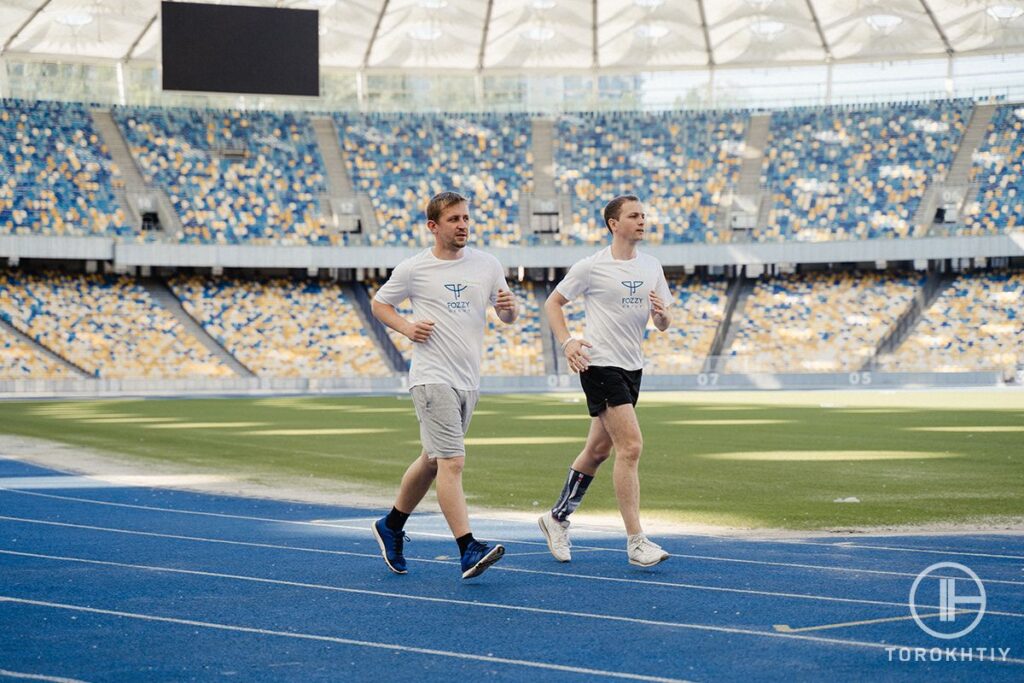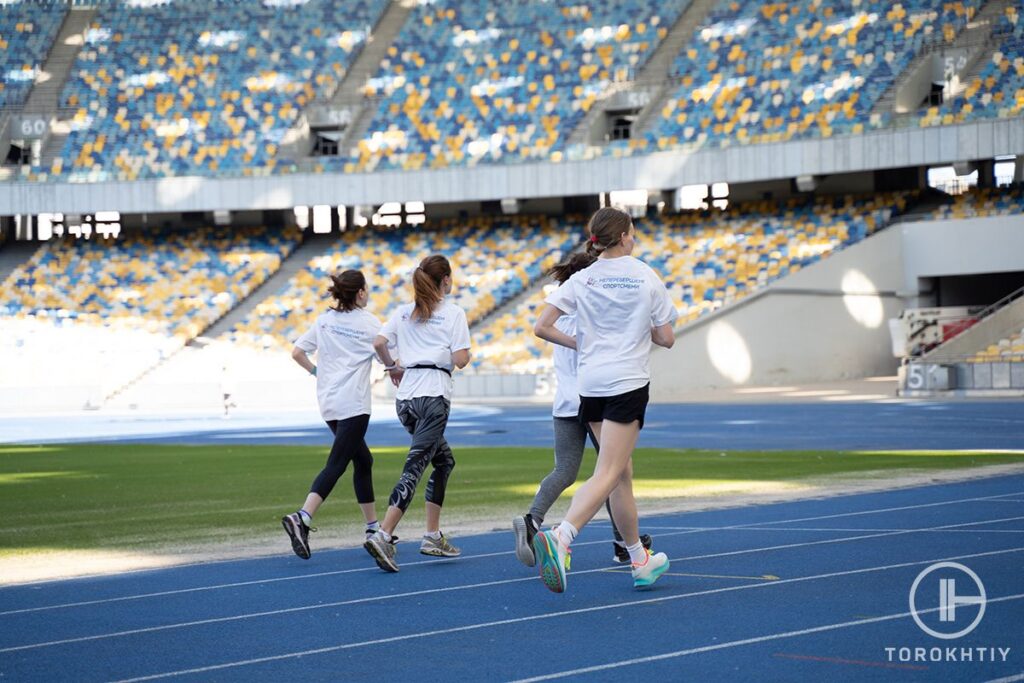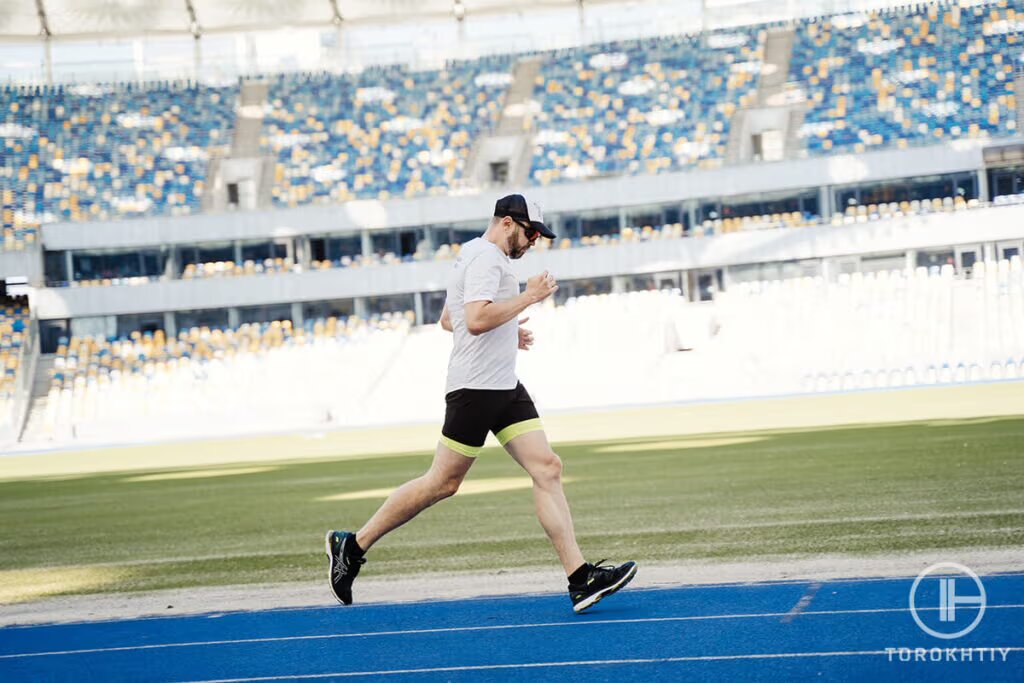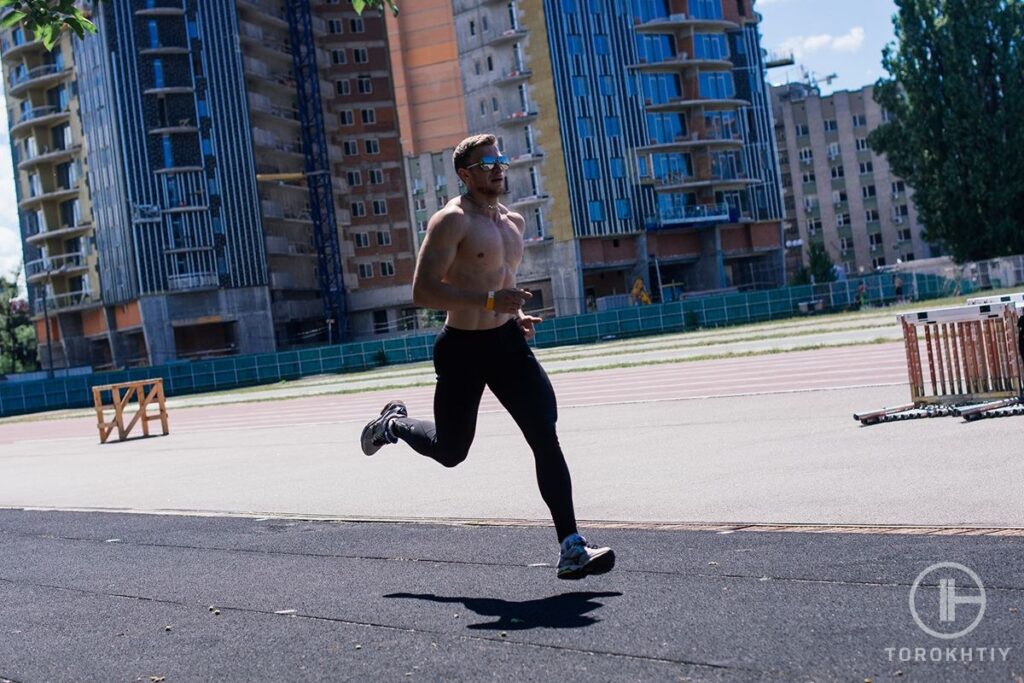What Is Considered Long-Distance Running? How to Run more
Author:
Unlock your full potential by engaging with our experts and community! Have questions about your fitness journey or looking for expert advice on weightlifting techniques? Don’t hesitate — leave a comment below and Oleksandr Zagrebelnyi will provide a personalized answer and insights to help you reach your goals.
Torokhtiy is reader-supported. Some links are affiliate links, and we may earn a commission at no extra cost to you. See our disclosure page for details.
Are you looking to improve your performance over long distances? Whether you’re training for a 5K race or a full marathon, understanding what is long-distance running can help you reach your fitness goals and achieve better endurance.
In this blog post, we’ll explore the varying definitions of what long-distance running entails, as well as different types of running events that are classified as long-distance races. Want to know what is considered a long run? Take off those sneakers and dive in!
How long is a long-distance running race? – Long-distance running involves races that cover distances greater than the classic track-and-field events like sprints and middle distance runs. It is typically considered distances from 3,000 meters or 1.86 miles. The maximum length depends on the runnner’s expereince and fitness level.

What Is Considered Long-Distance Running?
Have you ever wondered how many miles is considered long distance? Long-distance running varies in definition, depending on your source. Generally, long-distance running is considered any run of at least 3000 meters or 1.86 miles or more depending on the athlete’s level of fitness. Endurance running typically refers to races between 5k and the ultra-marathon distance.

Most Common Types of Long-distance Runs
Here’s a table showing what is distance running and different types of popular long-distance runs:
| Distance | Km | Miles | Training Level | Average Time |
|---|---|---|---|---|
| 5k | 5k | 3.1 miles | All levels | 25 min |
| 10k | 10k | 6.2 miles | All levels | 48 min |
| Cross-country | 3-8 km | 1.86-4.97 miles | All levels | 14-47 min |
| Half-marathon | 21 km | 13.1 miles | Experienced | 1 h 50 min |
| Marathon | 42 km | 26.2 miles | Experienced | 4 h 29 min |
| Ultramarathon | 50+ km | 31+ miles | Experienced | 5 h |
What makes long-distance running interesting is its diversity, which allows runners of different fitness levels to find a race that is a good fit for them.
Running Time Calculator For Enhance Long-Distance Performance
This calculator is designed to help you estimate the approximate time needed to cover your desired distance. Use the calculator below for accurate predictions.
Running Time Calculator
Result:
3 Main Types of Running Distances
From short races to ultra marathons, there are many race distances for runners of all levels.
1. Short Races
What is considered a short run? Short-distance running typically refers to events up to 800 meters, or 2 laps around the track. These races may take place in high school competitions, professional events, and Olympic-level competitions. The most common short races are the 100-meter sprint, 55-meter indoor, and 110-meter outdoor hurdles.
What differentiates these from other kinds of running events is their speed. Inexperienced runners may be able to complete a lap in 90 seconds, while elite runners can do it in about 45 seconds.

2. Medium-Distance Races
Medium-distance races are some of the most popular running events. They range from 800m to 3,000m and require an understanding of pacing and endurance.
These types of races typically place more emphasis on speed than long-distance running. An average time is 2-3 minutes for 800m and 14 minutes for 3k.

3. Long-Distance Races
So what counts as long distance? Typical long distance races include the 5k and 10k, half marathons, marathons, and ultramarathons. In competitive track-and-field events, the 3km (1.9-mi) mark typically defines an event as being “long-distance.”
Different types of long-distance runs are further distinguished by their surfaces. These include road running, cross-country running, and track running, which each having different advantages and disadvantages in terms of terrain conditions.
The level of fitness required to successfully complete these runs also varies greatly. Beginners are advised to start at a slow pace, while experienced runners can challenge themselves at higher levels.

Long-Distance Running or Short-Distance Running: What Is the Difference?
Let’s discuss short and long distances in more detail.
1. Long-Distance Run
Long-distance running is a form of athletics that includes foot races ranging from 3,000 meters up to the ultra marathon. These races are typically associated with road running and trail running, but can also include cross-country events.
✅ Advantages of Long Distance
Long-distance running is a great way to improve endurance. It relies on slow-twitch muscles that use oxygen as fuel more efficiently, meaning you’ll be able to run for longer periods without getting too fatigued.
This increase in aerobic capacity can help runners stay strong even during the later miles of marathons or ultras. Furthermore, long-distance running trains your body to adjust quickly to different intensities of exercise over an extended duration. It’s an invaluable skill for any ambitious distance runner.
❌ Disadvantages of Long Distance
Some people claim that long-distance running can be damaging to the heart and affect overall cardiovascular health. When training for long distances, runners increase their heart rate over a longer period of time. This can have risks if not done correctly or with proper rest periods.
Additionally, consecutive days with long runs, coupled with an inadequate amount of recovery time, can cause a runner to suffer from over-training syndrome and other physical injuries.
2. Short-Distance Run
Short-distance running, sometimes referred to as sprinting, requires high-power speed over a short distance, usually of less than 1 mile. While sprinting, runners are required to use bursts of speed for a short time, typically with an aggressive start. They must also maintain a faster stride frequency as compared to long-distance runs.
✅ Advantages of Short Distance
Short-distance running is a good tool for improving overall fitness. It can help accelerate metabolism and burn calories while building stronger muscles.
Sprinting, which is a form of short-distance running, can also increase speed and contribute to weight loss. It offers many other incredible health benefits, such as improved cardiovascular endurance, increased lung capacity, improved explosive power, and greater muscle strength.
❌ Disadvantages of Short Distance
Short-distance running mainly focuses on speed and power, rather than endurance. Because of the intense sprinting involved, there is an increased risk of overuse injuries such as shin splints, stress fractures, and Achilles tendinitis.
Additionally, short-distance running may not provide the same cardiovascular benefits that long-distance running can offer due to limited time spent at a sustained effort.
How to Choose the Right Distance to Start Running?
Now that you understand how far is considered long distance, let’s continue with some useful tips. When it comes to choosing the right distance for your running, there are several factors to consider.
1. Personal Preferences and Goals
When it comes to running, personal preferences and individual physiology are key factors in determining the best distance for each athlete.
Tips From the Champ
Runners should consider their desired speed, endurance level, and personal goals when choosing a running distance.
Running Coach Nike Run Club Kyiv
2. Fitness Level and Training Capacity
Fitness level and training capacity directly affects performance when it comes to long-distance running.
Cardiovascular fitness and aerobic exercise are essential components of long-distance running, as the heart is responsible for pumping oxygen around the body. It allows athletes to sustain longer runs without their muscles becoming exhausted too quickly.
3. Time Commitment and Availability
Long-distance running is a significant time commitment. It requires runners to dedicate a lot of their time to making sure training plans are followed correctly. Most mid-level long-distance training will require at least 10 hours per week for several months prior to the race itself in order for the body to adapt to the race load.
Experienced runners may be able to get away with slightly fewer weekly hours. However, they should generally commit even more time towards ensuring proper pre- and post-race preparation.

5 Tips for Increasing Distance
Here are some important tips to help increase long-distance running endurance:
1. Slow Your Pace
Maintaining a slow pace during long-distance running is essential for maximizing endurance and performance levels. Slowing your pace helps decrease recovery time and allows the muscles to work more efficiently for longer periods of time.
It also strengthens muscles that are conducive to success at running longer distances, as well as training the respiratory system.
2. Polarize Your Training
Polarized training refers to a type of exercise focusing on two distinctly different types of workouts: 80% low intensity and 20% high intensity. This method is commonly associated with base building or endurance training, where long, slow distance running is used as the foundation of your cardiovascular fitness.
Polarized training seeks to improve aerobic capacity and increase mileage. This helps you to better tolerate the higher intensity sessions, and has an overall greater effect on key endurance variables, such as lactate threshold.
3. Target the Long Run
The long run should take place toward the end of the running week in order to build up muscle memory and mental toughness and increase aerobic capacity.
This also gives your body enough time to rest and have proper recovery after each long run session, so that you can receive maximum benefit.

4. Step Up, Step Down
Long-distance running training involves alternating weeks of increasing and decreasing mileage. This approach to training helps the body gradually adjust to the demands of long-distance running, making it less likely that you’ll suffer an injury.
Step up weeks involve adding a small amount of mileage to your long run each week—usually around 20-25%. During these times, you will increase your overall endurance while also strengthening muscles.
Step down weeks are when you reduce your mileage and give your body time for adequate rest and recovery, allowing it to absorb what it has learned from the previous weeks.
5. Fuel Properly
Proper nutrition is essential for long-distance runners to maintain their energy levels, prevent fatigue, and reach peak performance. Athletes performing longer endurance activities are advised to refuel every 45 to 60 minutes in order to sustain energy levels.
It is recommended that long-distance runners consume around 60% to 65% of total calorie intake from carbohydrates during runs. Long runs require about 200 to 300 calories per hour, primarily from carbohydrates.
Hoka Bondi 8
- Material: Breathable and supportive mesh upper
- Sole Material: Full-length EVA midsole for maximum cushioning
- Outsole (tread feature): Durable rubber outsole with a unique lug pattern
- Drop: 4mm
- Season: Suitable for all seasons
- Special Features: Exceptional cushioning and comfort
- Size: Available in various sizes
- Type: Maximum cushioning running shoe
If you want excellent running or walking shoes or just footwear you’ll be comfortable in, you can’t go wrong with the Hoka Bondi 8.
It’s been upgraded and now they have lighter, softer materials and a new extended heel design. The heel design gives a super soft, balanced feeling from th emoment your heel hits the ground to when you push off with your toes.
As far as the weight goes, it’s around 10.80 ounces, and the heel drop is 4 mm. They’re not too heavy and the lower drop is a good balance between cushioning and feeling connected to the ground.
The Bondi 8 is focused on cushioning and keeps things simple. There’s a good amount of support without any extra stuff that you don’t really need and that would only jack up the price. Take the rear crash pad, for example – it makes for a soft, smooth ride, which is perfect if you like to run outdoors.

The upper part is made of engineered mesh, which is breathable and keeps your feet cool and dry. The tongue and collar have memory foam and mold to your foot shape. All of these features make the fit snug but flexible, which is exactly what you would want.
The Bondi 8 is eco-friendly because it uses recyclable materials in parts like the mesh and the sockliner. Plus, the shoes are completely vegan, which (if that’s important to you) is nice!
Frequently Asked Questions About Long-Distance Running
What Is Long Distance in Track and Field?
Long-distance running in track and field includes races ranging from 3000 meters up to 30,000 meters. The most popular distances are 3000, 5000 and 10,000m.
What Is a Long-Distance Running Race Called?
Long-distance running races, or endurance runs, include marathons, half-marathons, and ultra marathons.
What Distance Is Considered Endurance Running?
Long-distance running, also known as endurance running, is a form of continuous running over distances of at least 3k (1.9 miles). A long run in a training plan is considered anything 1.5 to 2 times longer than your average run.
Final Thoughts on Long-Distance Running
Long-distance running is a challenging physical activity that can provide a range of health benefits. The most common long distance runs include the marathon (26.2 miles) and the half marathon (13.1 miles).
Long-distance training requires regular, intense workouts that build up cardiovascular fitness, endurance, and muscle strength over time. Other longer races, such as ultra marathons, offer even more rigorous challenges.
What is the longest distance you’ve ever run? Please share your experience in the comments below.
Also read:
References:
- Britannica, T. Editors of Encyclopaedia. “long-distance running.” Encyclopedia Britannica, August 28, 2023 https://www.britannica.com/sports/long-distance-running
- Wilson Met al. Diverse patterns of myocardial fibrosis in lifelong, veteran endurance athletes. J Appl Physiol (1985). 2011 Jun;110(6):1622-6 https://journals.physiology.org/doi/full/10.1152/japplphysiol.01280.2010
- Minutes of hard exercise can lead to all-day calorie burn. Science Daily https://www.sciencedaily.com/releases/2012/10/121010161840.htm
- Kluitenberg B, et al. What are the Differences in Injury Proportions Between Different Populations of Runners? A Systematic Review and Meta-Analysis. Sports Med. 2015 Aug;45(8):1143-61. https://link.springer.com/article/10.1007/s40279-015-0331-x
- Stöggl T, Sperlich B. Polarized training has greater impact on key endurance variables than threshold, high intensity, or high volume training. Front Physiol. 2014 Feb 4;5:33. https://www.frontiersin.org/articles/10.3389/fphys.2014.00033/full
- Photos by Torokhtiy Media Team.
Why Trust Us?
With over 20 years in Olympic weightlifting, strength training, nutrition coaching, and general fitness our team does its best to provide the audience with ultimate support and meet the needs and requirements of advanced athletes and professional lifters, as well as people who strive to open new opportunities and develop their physical capabilities with us.
By trusting the recommendations of our certified experts in coaching, nutrition, and sports training programming, as well as scientific consultants, and physiotherapists, we provide you with thorough, well-considered, and scientifically proven content. All the information given in the articles concerning workout programming, separate exercises, and athletic performance, in general, is based on verified data.
The product testing process is described in more detail here.
Oleksandr is a running coach and member of the Nike Run Club coaching team for 8 years. A participant in national and international competitions at distances from one kilometer to the ultra trail. Owner of mountain trail running camps. Nowadays Oleksandr is responsible for creating running training programs for athletes of various levels, coaching personally offline and online, conducts trail running camps in the mountains, participates in competitions.




Still have questions after reading our article? Unlock your full potential by engaging with our experts and community! Don’t hesitate — leave a comment below and Oleksandr Zagrebelnyi will provide a personalized answer and insights to help you reach your goals.